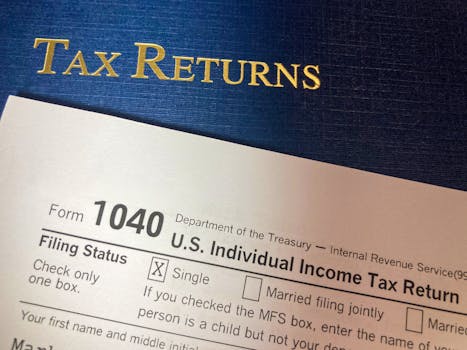Personal Finance
HSA vs. FSA: how to save on taxes with health expenses
Learn what sets HSA vs FSA apart for your health expenses. Get expert tips on maximizing tax savings, handling rollovers, avoiding missed deadlines, and making the right choice for your next open enrollment.
Advertisement
Confused about tax savings for medical bills? You’re not alone. Many people see HSA vs FSA options from employers and aren’t sure which to choose for lower out-of-pocket costs.
Managing your health expenses while maximizing tax benefits can boost your budget and peace of mind. Choosing between HSA and FSA plans plays a big role for families and individuals alike.
Explore clear, practical guidance in this deep dive on HSA vs FSA rules, limits, and strategies. Learn how people like you use each account for smarter, tax-efficient health spending.
Comparing Account Rules: Picking What Matches Your Goals Today
Selecting the right account means fewer worries about unexpected bills. Both HSA vs FSA offer unique structures, but matching their rules to your life is critical.
If someone says, “I want whatever’s easier, even if I pay a bit more in taxes,” you’ll know what that actually looks like after reading these details.
Eligibility: Understand When You Can Use Each Account
If you enroll in a qualified high-deductible health plan (HDHP), an HSA is an option. By contrast, FSAs work with many employer plans—even without a high deductible.
Many workers with traditional group health insurance get offered FSAs automatically. The HSA vs FSA choice often depends on what your job’s benefits allow.
For instance, someone who chooses an HDHP so they can get an HSA later needs to weigh if the risk of higher out-of-pocket costs is worth it for the tax perks.
Contribution Limits: Stay Ahead with Current Numbers
HSA vs FSA have IRS-set contribution limits that rise every year or two. In 2024, an individual HSA maxes out at $4,150, while FSAs cap at $3,050 per person.
Families get bigger HSA limits (up to $8,300), but FSA limits stay per participant. Knowing the maximum helps you estimate exact tax savings for your own situation.
“If I put in the max, how much do I really save on taxes?”—a common question. Review the table below to make numbers work for your budget.
| Key Feature | HSA | FSA | Takeaway |
|---|---|---|---|
| Eligibility | HDHP only | Most employer health plans | Check your plan type before deciding |
| Contribution Limit (2024) | $4,150 individual/$8,300 family | $3,050 individual | Know the exact max to plan savings |
| Rollover Rules | Unlimited rollover, year to year | Limited or none (up to $610 for some) | Don’t lose unused funds in FSAs |
| Portability | Yours for life | Tied to employer | Switching jobs favors HSA |
| Triple Tax Advantage | Yes | No | HSA offers more ways to save |
Managing Funds: Stretch Every Dollar for Health Costs
Getting the most out of your HSA vs FSA starts with knowing the best spending strategies and what counts as an eligible expense. You can reclaim more money each year with a clever plan.
Don’t leave money behind: the smartest users set up automatic payments, track balances, and verify receipts to avoid IRS headaches later.
Recognizing Qualified Medical Expenses
Both accounts apply to co-pays, deductibles, glasses, dental visits—with minor differences. Save receipts for sunscreen, bandages, or feminine hygiene if you’re in doubt.
People using HSA vs FSA accounts check IRS Publication 502 for guidance, but most pharmacies note FSA/HSA-eligible items now, which makes shopping easier in daily life.
- Review eligible expense lists annually to avoid mistakes if items change or new IRS guidelines appear.
- Save digital or paper receipts immediately for every health purchase, creating a backup in case of IRS audit.
- Link your HSA/FSA card to pharmacy and eye care accounts for easy direct billing, reducing paperwork and manual tracking later.
- Ask pharmacists or doctors directly, “Is this treatment FSA or HSA eligible?” to get specific guidance before you pay.
- Calculate future medical needs—prescriptions or dental work—then adjust contributions based on your planned spending, so you capture the full tax advantage.
FSA users learn to “use it or lose it,” so setting phone reminders for big annual purchases prevents leftover cash in December.
Maximizing Tax Savings with Strategic Planning
Super savers time big expenses for the start of the year, like glasses or annual checkups, so they get reimbursed sooner from their FSA or HSA balance.
Stacking FSA contributions with other benefits, like dependent care FSAs, creates even more tax savings if offered. Not every workplace gives this option.
- Contribute the maximum you can afford early in the year—funds grow tax-free in HSAs, while FSAs give you access to the full balance up front.
- Reimburse yourself for out-of-pocket expenses using HSA debit cards or app transfers so you never miss a deduction opportunity.
- Knit together FSA spending with routine care—book dental cleaning, buy allergy medication, and get new glasses in one shopping window.
- Keeps logs of every expense, categorized by “FSA” and “HSA” to prepare for tax filing or account rollovers at year’s end.
- Watch the calendar—FSA funds usually expire at year’s end unless your plan offers a short grace period or a $610 rollover.
Wrapping together these small changes lets you keep more of your paycheck as tax-free savings, year after year.
Life Stages: Account Choice Changes with Your Needs
Your best HSA vs FSA pick will shift as life changes: whether you’re starting out, raising a family, or nearing retirement. Adapting your plan can save you more, long-term.
Someone fresh out of college might say, “I barely go to the doctor, so an HSA’s long-term potential could really pay off.” Families weigh child care, routine visits, and cash flow.
Young Professionals: Building Financial Flexibility
Low medical use often means HSA wins. Saving aggressively now lets investment gains compound for decades, and dollars follow you to every new job, no matter the state.
You could picture a scenario: someone in tech switches roles every few years but stacks up HSA savings each time, then draws on them whenever there’s a surprise dental bill.
The HSA vs FSA tradeoff focuses on whether you’d prefer money that sticks with you long term—think “health IRAs” for medical emergencies or big surgeries down the road.
Growing Families: Prioritizing Everyday Health Costs
Parents tend to want predictable spending, seeking FSAs that front-load funds for copays, glasses, or flu shots. “I want to budget every dollar for when the kids get sick.”
Big household budgets can pair parent and dependent care FSAs, stacking savings if both parents’ jobs offer programs, but FSA funds are lost if not spent each year.
Families compare HSA vs FSA by asking: “Will my plan’s lower deductible offset the higher cost per doctor visit, or am I better off with the safe, scheduled spending of an FSA?”
Account Portability and Long-Term Value for Employees
Understanding account portability helps you avoid leaving money behind. HSAs stay with you, while FSAs usually end with your job—crucial as employers or locations change.
Workers moving jobs every few years often say, “I want an account that’s truly mine, no matter where I end up living or working.”
Scenario: Leaving a Job Midyear
Leaving your job in June? Unused FSA dollars generally disappear, even if you contributed them. With an HSA, the entire balance follows you to your next employer.
Before resigning, use FSA cash on prescriptions, physical therapy, or new glasses. For HSA, there’s no pressure—money sits and grows, tax-free, until your next medical need.
Understanding HSA vs FSA portability can prevent costly mistakes, letting you keep hard-earned money for future expenses.
Shared Accounts and Spouse Coordination
If both spouses have access to workplace accounts, sync contributions by total family health costs. For HSAs, only one family account is needed—combine funds for efficiency.
With dual FSAs, estimate if expenses ever exceed a single limit, planning purchases and reimbursements for both accounts. Never submit the same expense to each plan.
Coordinating HSA vs FSA properly keeps households from missing tax breaks, particularly for deductibles, prescriptions, or surgery bills that hit in one year.
Tips for Smooth Year-End Transitions and Claim Management
December 31st approaches quickly. Setting reminders and organizing claims for HSA vs FSA accounts helps you keep every dollar—never lose out on eligible expenses at the deadline.
Straightforward checklists and automation mean fewer last-minute headaches, especially for FSAs with “use it or lose it” risk. Lean on technology and reminders instead of memory.
Year-End Checklist for FSA Users
Start by running your FSA account report in November. List all expenses claimed, match with receipts, and tally expected out-of-pocket costs for the final month.
Visit a pharmacy or schedule dental work ahead, spending down leftover FSA cash. In-store tags show “FSA Eligible” to make shopping quick and easy.
Turn on text or app reminders for last-minute deadlines, so you don’t watch funds vanish because of holiday distractions or paperwork delays.
Managing HSA Accounts as the New Year Begins
HSAs roll over, so set a recurring date—January 5th, for example—to review balances and update your contributions for the coming year, based on last year’s expenses.
Check if any new expenses, like orthodontics or LASIK, are planned—then time purchases for after contributions renew in January for max flexibility.
Update investment choices (if offered by your HSA) to align with evolving health, risk, or family situation—HSAs grow tax-free for years, so long horizons matter.
Rollover and Expiry: Knowing When the Clock Runs Out
Not all accounts work the same. HSAs offer unlimited rollover, while FSAs come with sharp deadlines or a tiny rollover—handling these rules makes big financial differences.
Missing the FSA deadline means forfeiting cash. With HSA, every dollar is available for tomorrow’s unplanned hospital bills, routine care, or next year’s prescriptions.
- Check annual plan documents for specifics—some employers let FSA users roll over up to $610, or give a 2.5-month grace period after yearend.
- Plan and schedule expensive health purchases in the fall, using up old funds before deadlines cancel your available balance.
- When possible, estimate bills for the next year—then set aside extra in HSA if your FSA’s limit or rollover isn’t enough for larger needs.
- Track your usage in a spreadsheet or app, so you know when and how much is at risk each time benefits reset.
- Don’t count on exceptions—administrators can’t refund or alter expired FSA funds unless a big life change (like job loss) fits the fine print.
Making a Confident Choice That Lasts Throughout Your Career
Picking between HSA vs FSA centers on real, everyday differences. From eligibility rules and tax savings to deadline management, your habits and needs shift the best choice year to year.
Tax laws and employer rules change, but knowing account strengths means you’re prepared. Use this year’s flexibility as life changes, from family expansion to new jobs or surprise bills.
See your next open enrollment as an opportunity to boost savings, cut taxes, and turn health spending into a smarter move for your overall financial picture.





